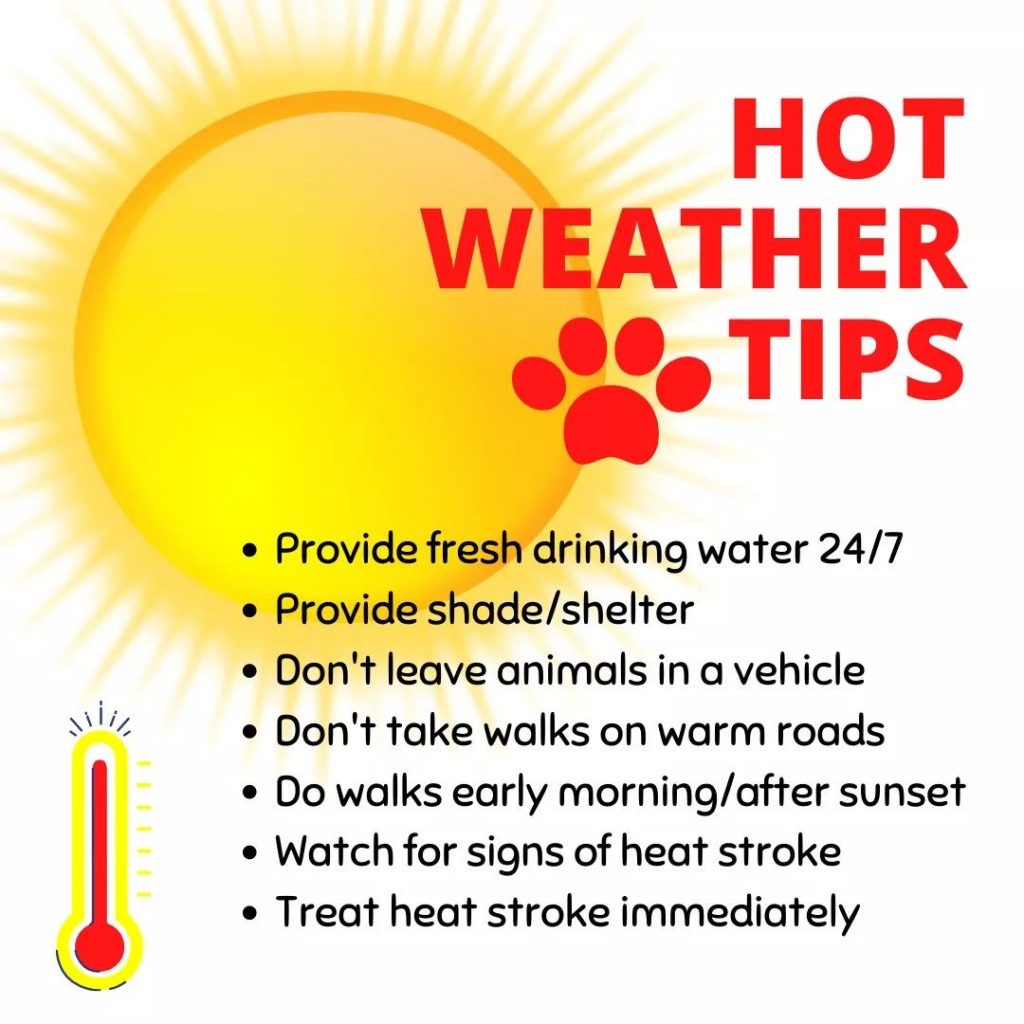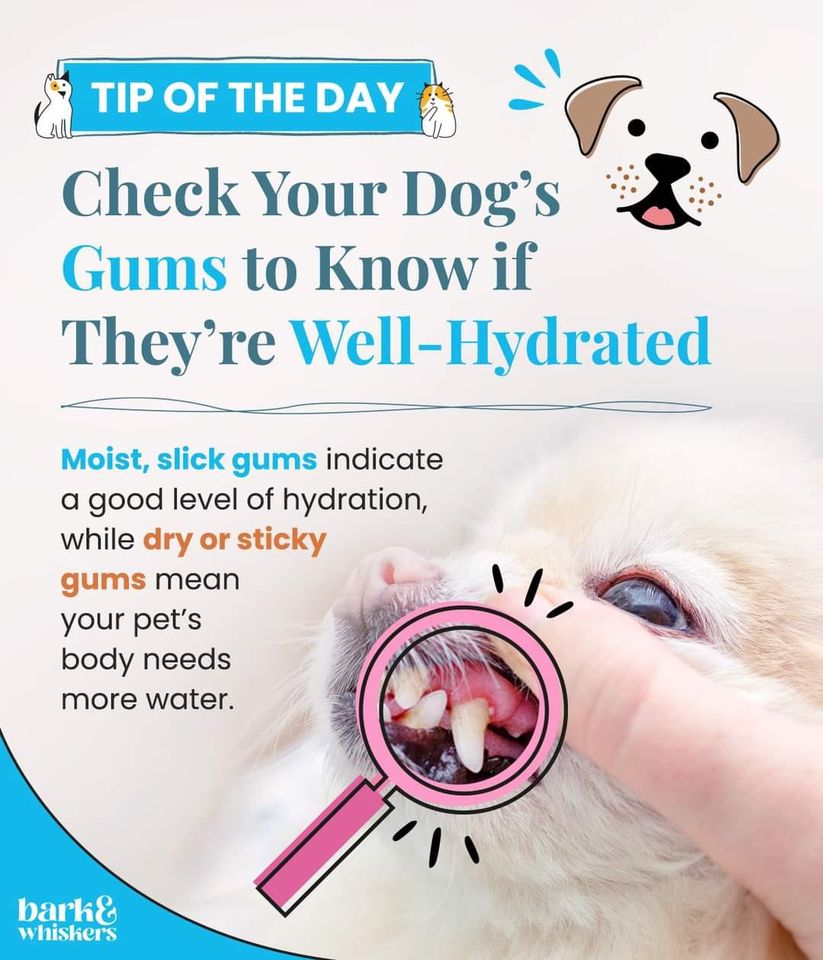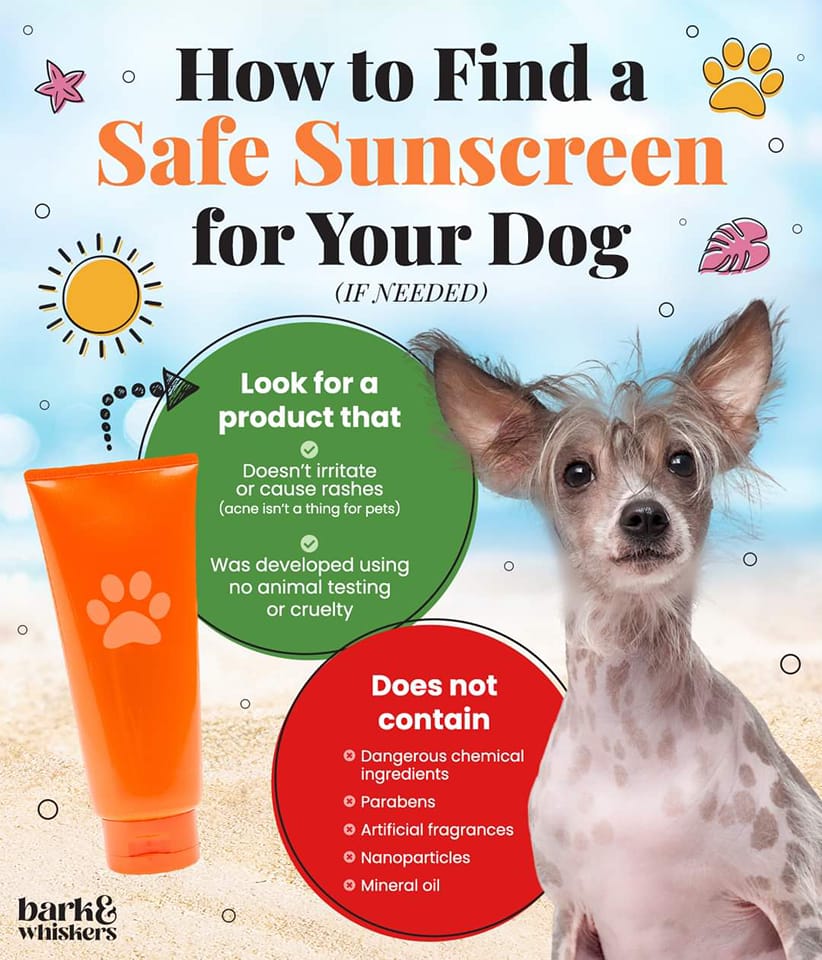
WHEN YOU ARE FEELING THE HEAT OF THE WARMER WEATHER, SO ARE YOUR PETS!
As we felt during this last week, the warmer weather is here, and protecting your pets from the heat is crucial for their well-being. While we humans may relish these sunny days, it’s crucial to remember that our furry companions may not share the same enthusiasm for the hotter days.
In this article, we explore the essential steps and precautions necessary for safeguarding our four-legged friends against the oppressive heat. From understanding the unique vulnerabilities of pets to the importance of hydration and shade, we’ll equip you with some knowledge and tools you need to ensure your pets stay cool, comfortable, and safe during the hottest months of the year.

HOT WEATHER TIPS
Provide Ample Shade: Ensure your pets have access to shade throughout the day. If they spend time outdoors, set up a shelter or use natural shade from trees or structures. Shade helps protect them from direct sunlight and keeps them cooler.
Limit Outdoor Activities: Avoid strenuous exercise and outdoor activities during the hottest parts of the day. Opt for walks and playtime in the early morning or evening when temperatures are lower.
Stay Hydrated: Always have fresh, cool, clean water available for your pets. Dehydration can be a significant risk in hot weather, so encourage them to drink frequently. Although some owners think that ice water may help, it can actually slow your pet’s water consumption which is counterproductive in the heat. Chewing on ice cubes is also not recommended, especially for dogs with dental issues. Remember to keep their water bowls out of the sun.
Cats may be reluctant drinkers because in nature, they get a lot of the necessary moisture from their food. Here are some tips to encourage drinking for cats.

Provide Cooling Solutions: Offer your pets cooling options like a shallow kiddie pool or a damp towel for them to lie on. Some pets may enjoy a cooling vest or bandana designed for hot weather. Never let them swim, unsupervised and if they did dip in a chlorine pool, rinse them off with clean water after.
Consider Indoor Time: If the heat is extreme, it’s best to keep your pets indoors. Ensure your home is well-ventilated and has fans or air conditioning to maintain a comfortable temperature. Regulate the temperature inside your home. Use air-cons, and fans, or give access to cooler areas like a basement or darker room with tile floors.
Travel Safely: If you’re traveling with your pets, plan ahead to ensure they stay cool during the journey. Bring water, a travel crate with proper ventilation, and always avoid leaving them in a parked vehicle unsupervised.
Stay Informed: Keep an eye on local weather forecasts and heat advisories. Extreme heat warnings may prompt you to take additional precautions or keep your pets indoors.
PRECAUTIONS
Avoid Hot Pavement: Asphalt and concrete can get extremely hot in the summer, which can burn your pet’s paws. Walk your dog on cooler surfaces like grass. Test the pavement/ground/road with the back of your hand before you go for a walk. If it’s too hot for your hand, it’s too hot for their paws. Use the 7 second rule. If you can’t hold your hand on the road or pavement for 7 seconds, then it can potentially burn their paws and cause injury.
Never Leave Pets in Hot Cars: Even on mildly warm days, the temperature inside a car can rise rapidly and become dangerously hot. Never leave your pet in a parked car, even for a few minutes. Report animals in cars to your local SPCA!
Watch for Signs of Heatstroke: Be vigilant for signs of heatstroke, which can include excessive panting, drooling, rapid heartbeat, vomiting, and lethargy. If you suspect heatstroke, move your pet to a cooler place, offer water, start an active cooling process, and seek immediate veterinary attention. During the active cooling process to treat heatstroke, don’t use ice to cool a pet! Wet your dog down with room-temperature water and focus on your pet’s underside and back (avoiding the head). A wet towel is an effective cooling solution whilst travelling with your dog to the vet.
Grooming: Regular grooming can help keep your pets cool. Brushing your pet’s coat can remove excess fur and prevent overheating. However, don’t shave long-haired breeds as their fur helps regulate temperature. As a general rule dogs shouldn’t be shaved, either; however, there are exceptions, such as dogs with chronic hot spots. Some dogs actually really like a very short coat; in this case, consider a “puppy/summer cut”.
Protect Sensitive Pets: Take extra precautions with old, overweight, or snub-nosed dogs in hot weather. Boston terriers, Pekingese, Pugs, Lhasa Apsos, Shih Tzus, and Bulldogs are especially vulnerable to heat stroke. Dogs with heart or lung diseases should be closely monitored. For those breeds with a thin coat or lighter skin, prone to sunburn, apply animal-safe sunscreen.

Also read why responsible parents, do not take their children to the circus!
Even in the summer, we can experience some cold days! Here are our cold weather tips. If you see an animal that appears owner-less at the time, in danger, injured, in distress, or one that is not protected from the elements, please contact your local SPCA immediately! Visit the NSPCA website to find your nearest SPCA.
The risk of flash flooding is also a reality.

It doesn’t matter what kind of weather we have; your animals should always be protected from the elements as you are responsible for them and it is required by law. By following these guidelines, you can help protect your pets from the potentially dangerous effects of hot weather and ensure they enjoy a safe and happy summer.
As summer’s scorching embrace settles in, safeguarding your pets from the heat becomes an act of love and responsibility. Our loyal companions rely on us to ensure their well-being, and protecting them from high temperatures is a crucial part of that commitment.
Next week we will look at some basics tips on training your dog.